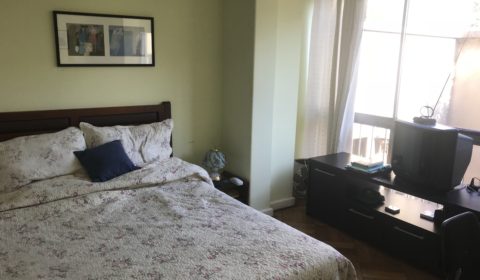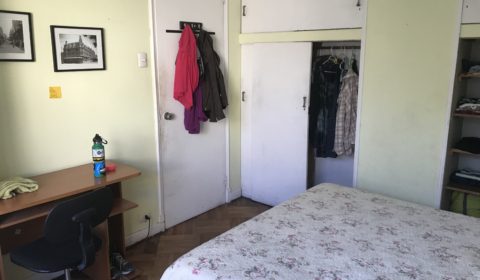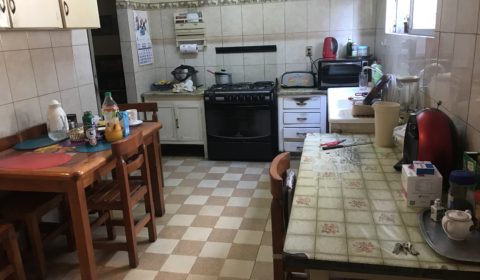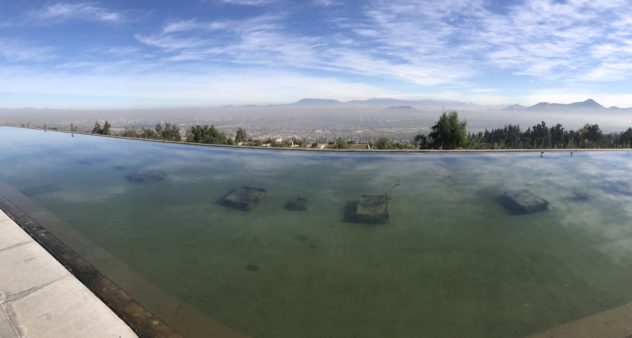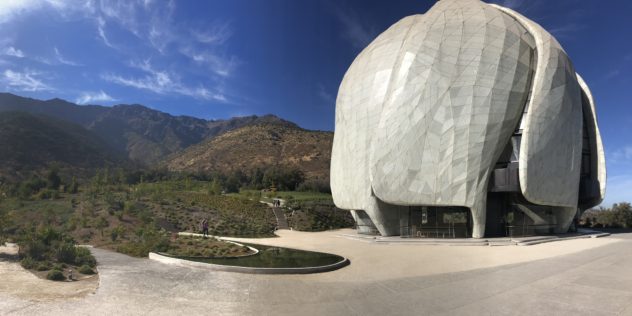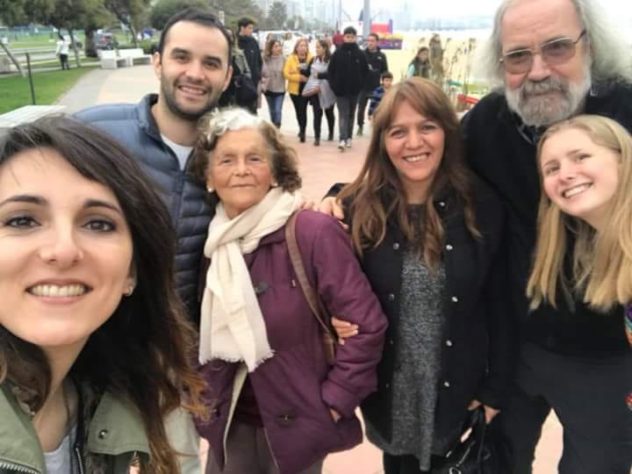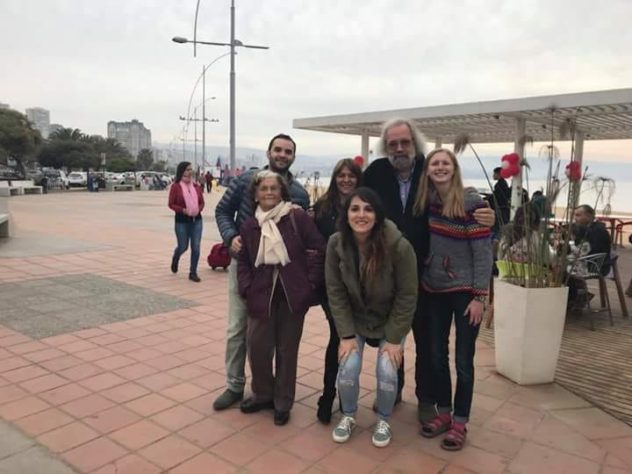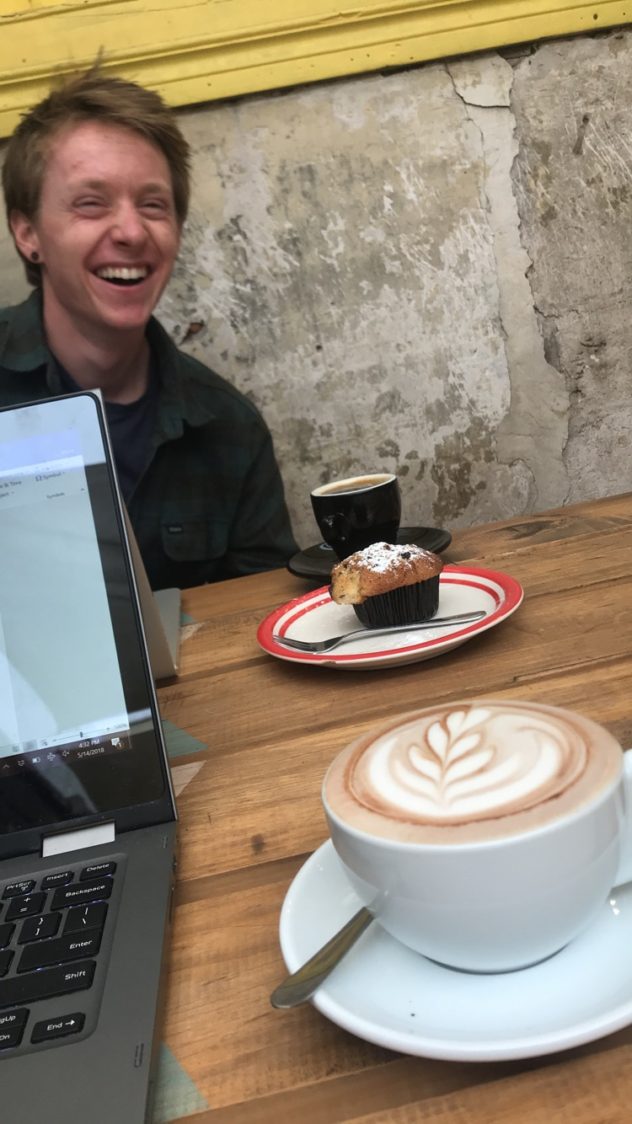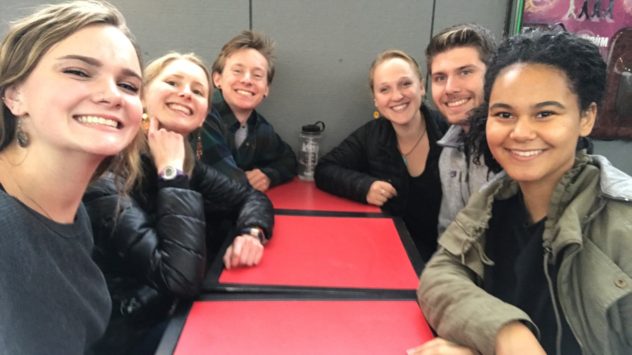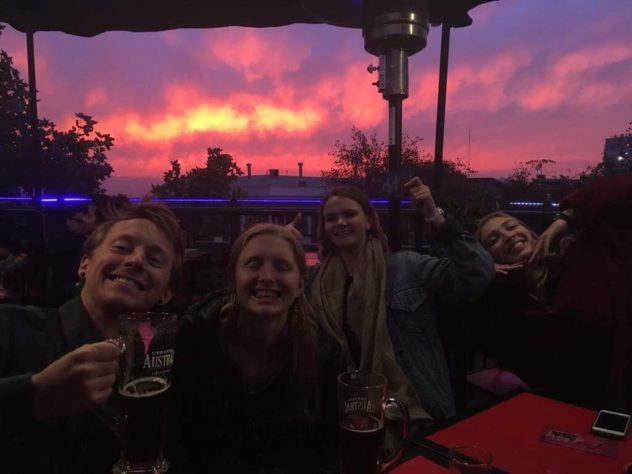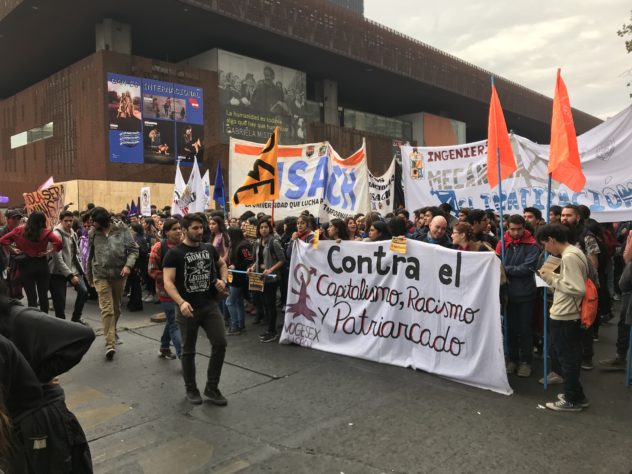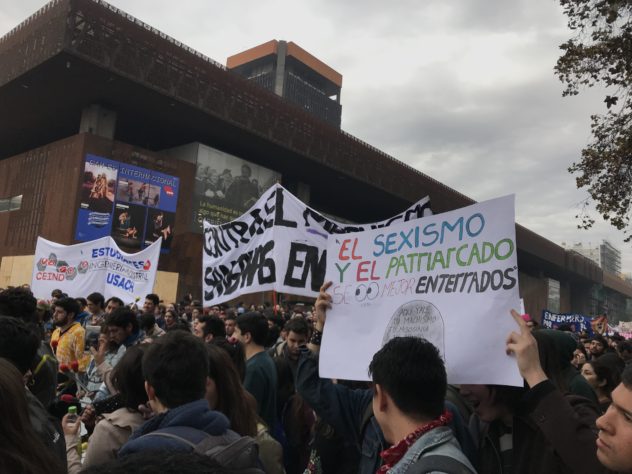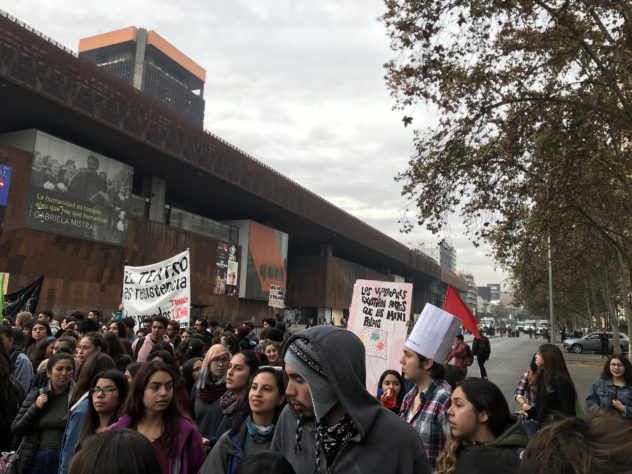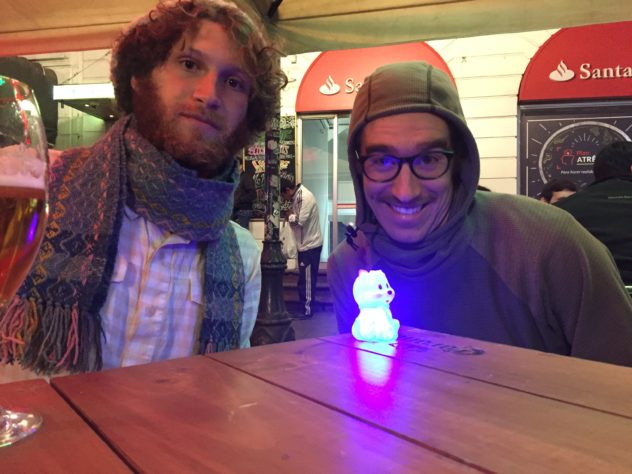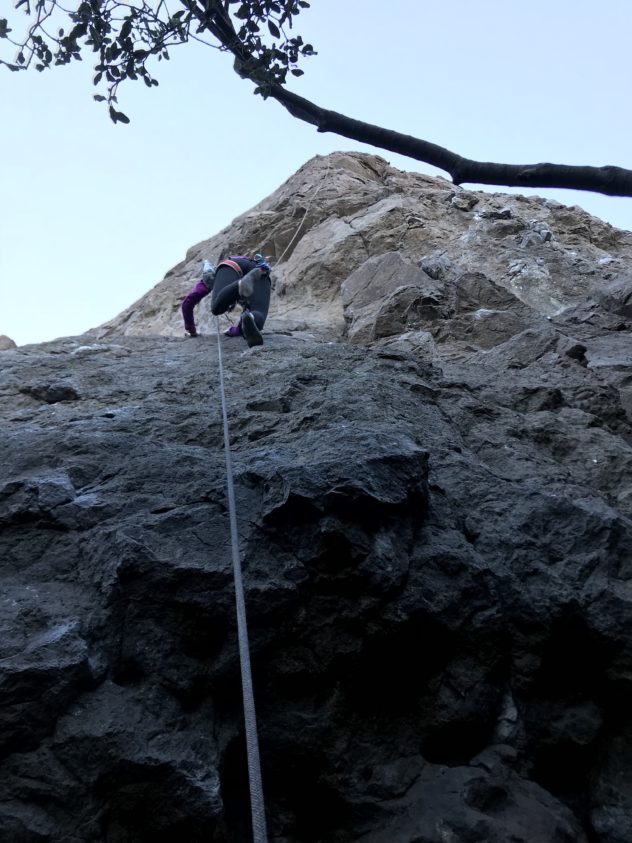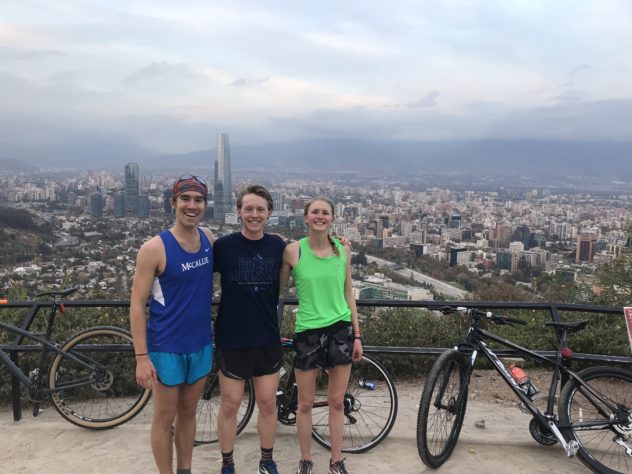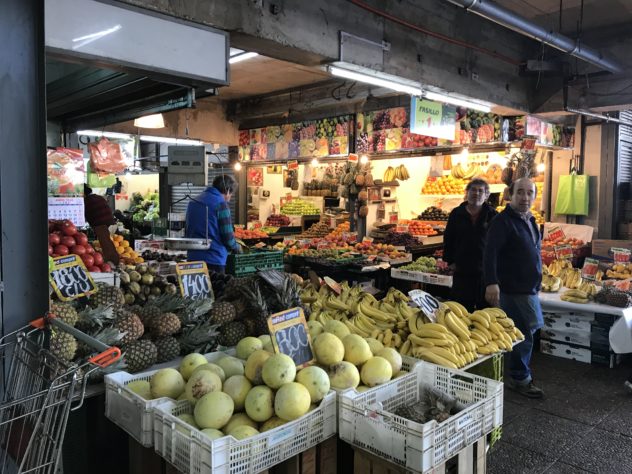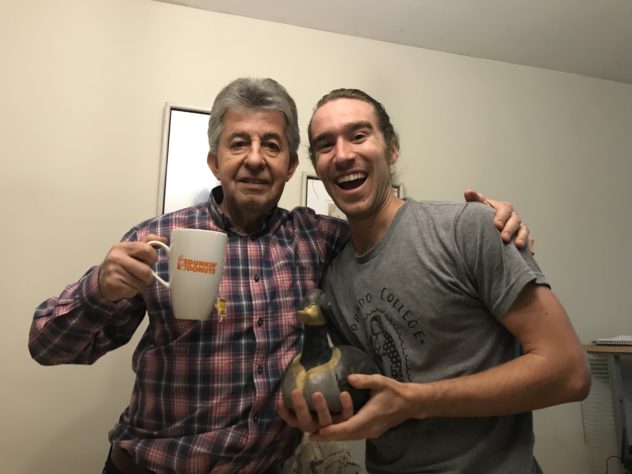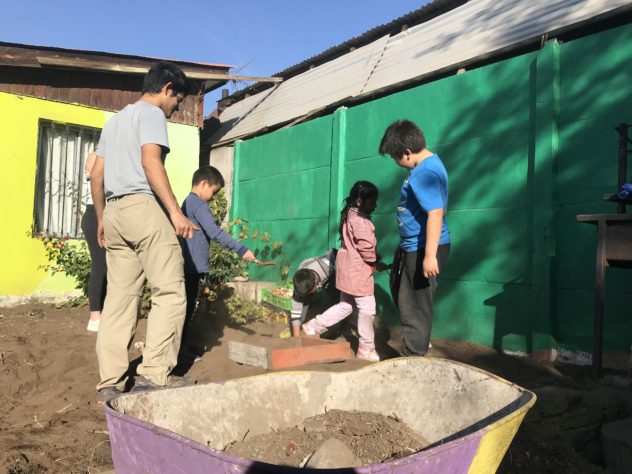Micros, Pololos, and Terremotos
Learning so much about Chilean culture and stoked about it!
I went running with my dear friend Austin Martin first thing yesterday morning, after having to adjust our 7:30 meeting time – the sun doesn’t rise until 7:50 here! But the streets were lovely and quiet at dawn, and we were both impressed by how clean Santiago is. Really. People were starting up their days in a leisurely fashion. Two things I’ve noticed about Chileans while exploring the streets: first, most dress in jeans and casual shirts, and second, they all obey traffic signals. Jay walking doesn’t happen.
I returned home for my first breakfast, which always fascinates me in a new country. Paula set out some yogurt, a banana, jam, toast, and cheese, plus coffee and juice; I was pretty content. Afterwards, she showed me how to get to school by bus, but got a little frazzled by how long it was taking to arrive. She never uses the bus, she says, and she got even more frazzled when we didn’t get off soon enough and were a bit late. We also left a little late to begin with – she’s a slow riser, and admitted that she makes Roberto bring her coffee in bed before she will face the day.
During our walk to the bus, I noted how many clinics are in Providencia. Paula explained that the number and variety of clinics here is great, but health care has gotten incredibly expensive. It’s only cheap for those who can’t pay, and the cheap service provided is poor. Private practices cost tons more. The same goes for schools – the public schools here are low-quality, so parents find it more and more necessary to send their kids to expensive private schools.
While on the bus, Paula was telling me all about the different transportation options. The subway and bus systems are called the metro and micro, respectively, and both use “bip” cards. They’re called bips because when you scan your card on entering, the machine makes a bip noise. It’s cute. The metro is pretty fast and clean and safe, the buses a little slower. Uber and Cabify are widely used here, and she and her daughter actually use Uber all the time. She mentioned that Uber became popular because there was a huge traffic accident problem in Santiago. The government adjusted the laws for drunk driving by making the BAC percentage very low – so even if you had just a glass of wine, for example, you’d be considered drunk driving. The Chilean youth quickly wised up and stopped drinking and driving, opting for Uber Pool and other services.
Paula dropped me off for a long but important orientation; we discussed money, transport, crimes to watch out for, earthquakes. All that fun stuff. First, program director Isabel (Isa) offered us coffee with a quick anecdote. We were drinking instant coffee, Nescafe. She explained that although we don’t consider Nescafe high-quality, Nescafe, along with mayonnaise and ketchup, are considered “modern.” During the 70s and the rise of Pinochet, Chileans lacked a lot of common goods, including coffee, so having the luxury of Nescafe is a big deal. If you want real coffee, you need to ask for “cafe cafe.”
First topic was money. 620 Chilean pesos is approximately $1. For prices ending in 1 through 5 (e.g. 781), it is acceptable to round down. Greater than five, you are expected to round up. At supermarkets, you can be asked “cuotas?” meaning, “installations?” Chileans can pay in installments using their credit cards if they so choose. You may also be asked “Dona su vuelta?” or “Donate your change?” Many local businesses support non-profit organizations, including the firemen. If you have a bag boy or girl, you should give them a small tip, because the supermarkets don’t actually pay them. As for servers in restaurants, you can provide a 10% tip, but it’s not necessary and if your service is bad, you are by no means obligated to leave anything.
Isabel finished the topic by telling us the chilenismo, “to be broke”: estar rata (literally, to be a rat) or estar pato (to be a duck).
Moving to earthquakes, there’s a difference between tremors, “temblores,” and real earthquakes, “terremotos,” to Chileans. If you can remain standing while the earth is shaking, it’s just a temblor. “Réplicas” refer to aftershocks. Both words have a double meaning. A terremoto is also a classic Chilean cocktail, consisting of new wine, fruit juice, and pineapple ice cream. Apparently it always comes in a very large glass, so a réplica is a smaller version of the same drink. Ha. One of my classmates’ host dad said that you can have one terremoto, you can have two terremotos, but never have three terremotos.
The other entertaining chilenismo lesson identified the nuanced language for significant others in Chile. In Spanish, boyfriend or girlfriend usually is “novio” or “novia.” Here, novio/a actually refers to a fiance – a ring is involved. “Pololo” or “polola” is boyfriend or girlfriend. If you’re in an open relationship, like all the cool kids these days, you have an “andante.” And friends with benefits are the more straightforward “amigos con ventajas.” There are motels here that you can rent by the hour, and if you want to insinuate that a person is heading to one, you call them “un pollo al velador.” Isabel, while enjoying this humorous conversation, was blushing.
After all that orientation, we had a fancy welcome lunch on this touristy street nearby, Lastarrías. It has lots of restaurants and bars and vendors, as well as an ice cream shop that Isa says has “helados muy ricos.” Right on the corner is also the GAM (Centro Cultural Gabriela Mistral), which is always showing modern art expositions, concerts, and plays, and has a sweet design space – visited today, and it was excellent. We were then let loose with our host families, so Paula picked me up and we returned home via metro.
During the afternoon, Austin and I set out to find our first Chilean climbing gym, which is 10 minutes from my house in Barrio Italia. Casa Boulder Limitada, is, as one would guess, only bouldering. It was difficult to identify the routes and the holds probably haven’t been cleaned in years, but we had a good time all the same.
The day finished up with a greasy but delicious dinner with Paula and Roberto: corn soup, very cheesy creamed spinach, and french fries. Roberto likes to put lots of mayo on everything, as many Chileans do. Paula was roasting him about it the whole time, saying he always complains that he’s a little overweight but then requests french fries at dinner, eats lots of mayo, drinks Coca-Cola, etc. She explained that childhood obesity is becoming a problem in Chile because lots of moms work now and get back late, so they don’t have the energy or time to fix a proper meal and opt for fast food. And of course, kids are so wrapped up in video games and all. Her niece, for example, she says is “en peligro” of becoming fat. She apparently did an exchange program in Louisiana and bellied up to our high-cholesterol and calorie breakfasts with her U.S. host sister. She loves all the American chains here, too – Taco Bell, McDonald’s, Starbucks, etc. We Americans always are causing problems, aren’t we? Luckily, the Chilean government has been enforcing more physical education in schools, and supermarkets now intentionally note products that are unhealthy. For instance, on Roberto’s mayo jar are black stamps with warnings like “alto en calorías” and “mucha grasa.” Roberto said, “When I see those stamps, I just think to myself: now there’s something that tastes good.” I love him and Paula.
This post has gotten long, so I shall continue in another. Hope everyone is well in the U.S. (and Copenhagen, if you’re reading this, Eva)!


